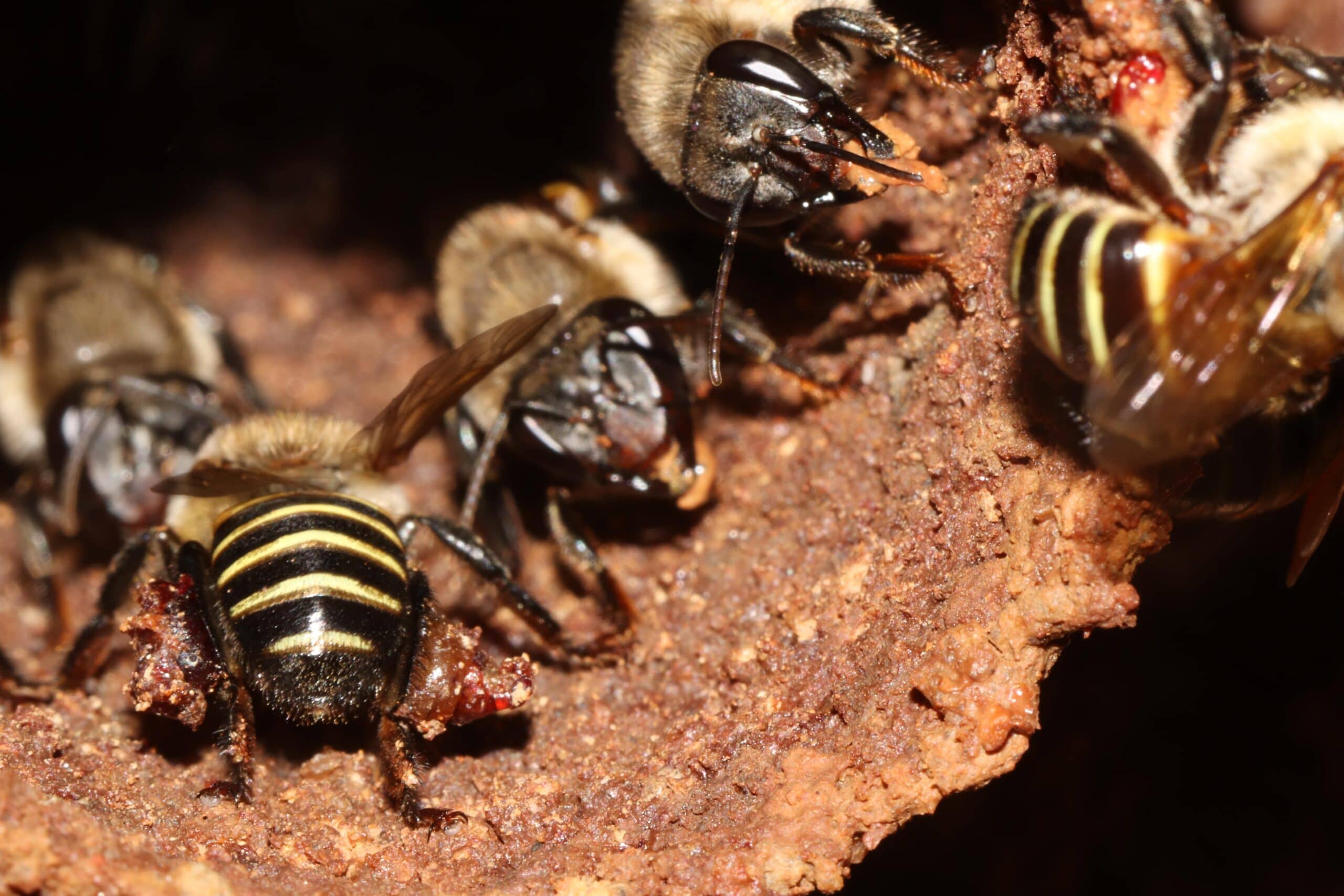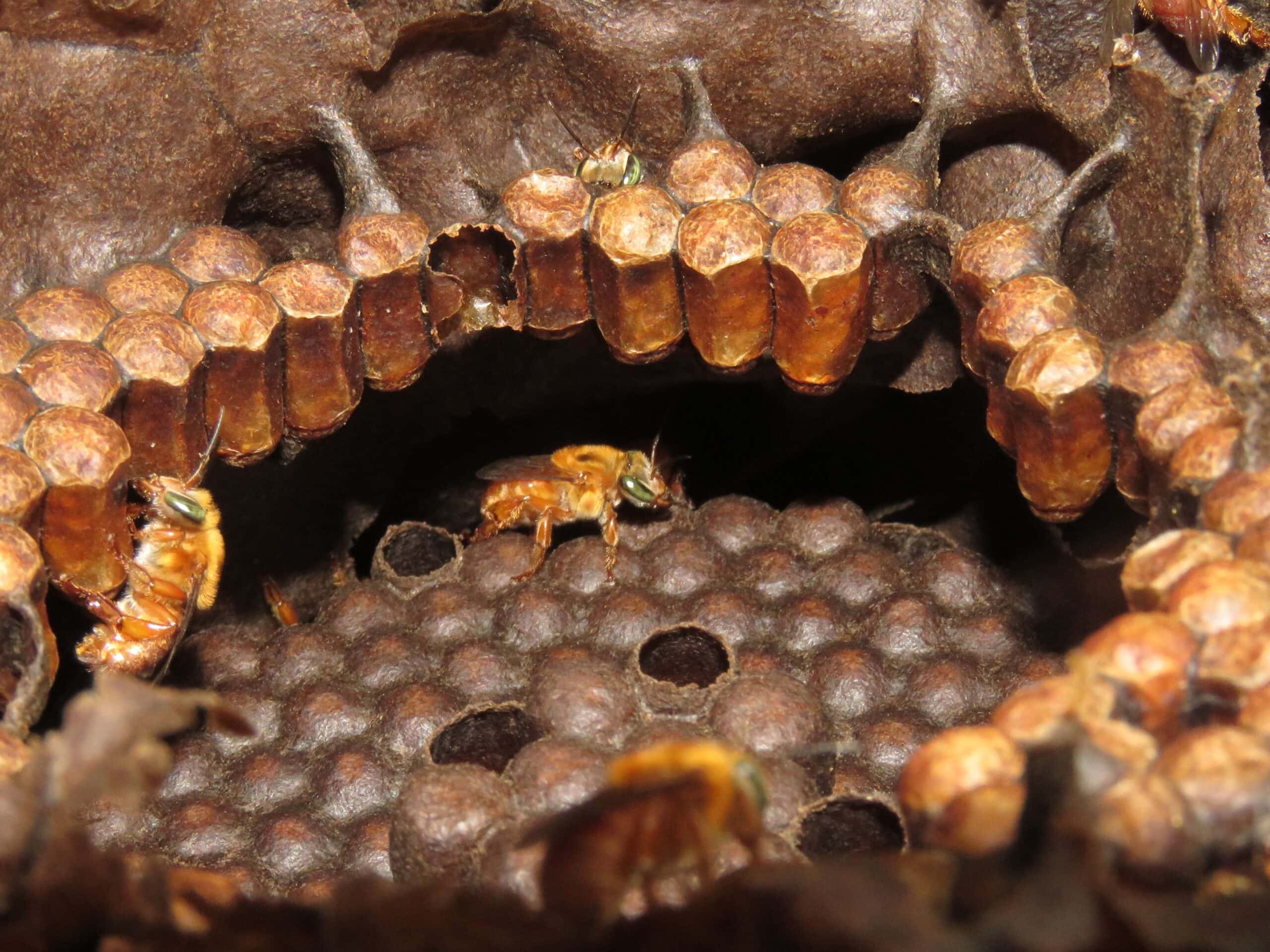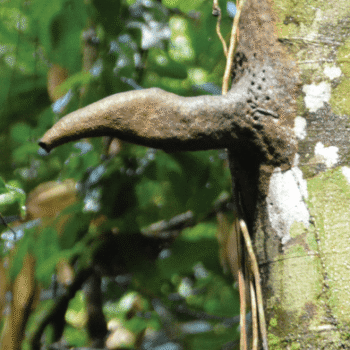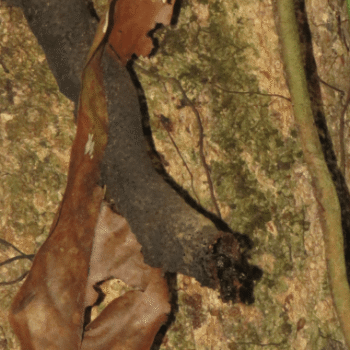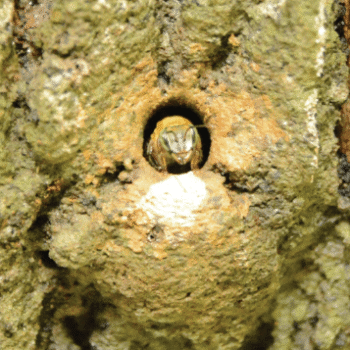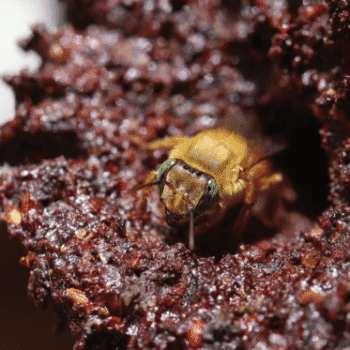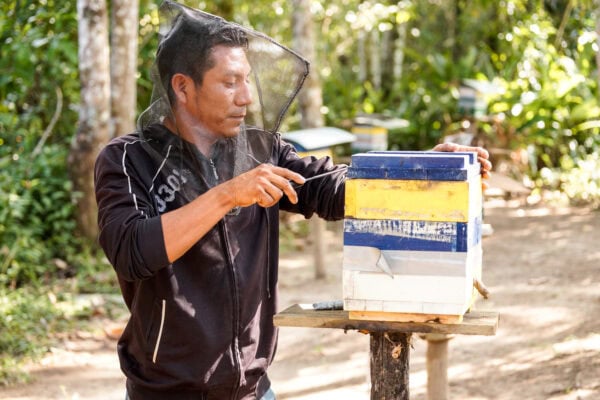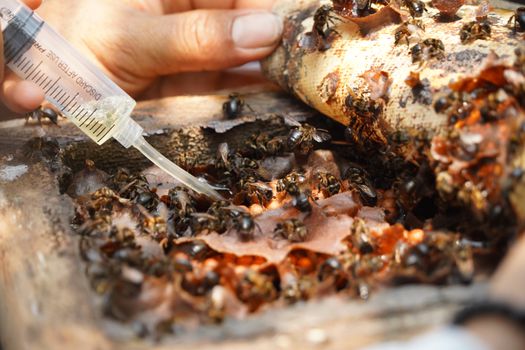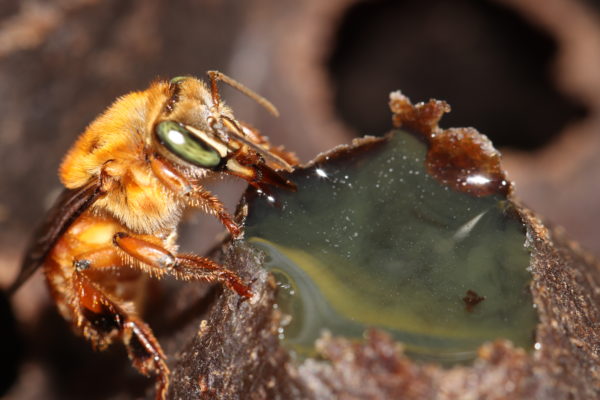Amazonian Honey
Stingless Bees and Sustainable Livelihoods Program
Not all bees sting. In the Amazon, stingless bees are gentle pollinators with an outsized impact: they sustain the forest, provide food and medicine, and hold special significance for Indigenous communities. At the Amazon Conservation Team, we work with these native bees because they are safer to handle, vital to rainforest health, and closely tied to traditional knowledge.
Since 2015, ACT has partnered with communities in Suriname, Colombia, and Brazil to strengthen meliponiculture—the keeping of stingless bees. Together, we are protecting forests, safeguarding traditional knowledge, and promoting the use of honey and propolis (a medicinal plant resin) as sources of both food and natural remedies.
Accomplishments By the Numbers
Beehives managed across three villages
Beekeepers leading community-based honey production
Increase in honey and propolis production in the past year
Increase in profits per beekeeping family
See How the Stingless Bees Make Amazonian Honey
Bees for Biodiversity
Stingless bees are essential allies in maintaining the Amazon’s extraordinary biodiversity. By pollinating a wide variety of plants, they ensure the survival of countless species and the resilience of entire ecosystems. Globally, about 90% of wild plant species depend on pollinators like stingless bees for reproduction.
As the Amazon faces mounting threats from deforestation, mining, and monoculture, stingless bees also play a crucial role in restoring degraded ecosystems. Their pollination helps native plants recover and thrive, supporting food webs, enriching soils, and strengthening the forest’s natural defenses.
By protecting stingless bees and supporting their keepers, ACT and its partner communities are helping sustain not only livelihoods, but also the ecological balance of the rainforest itself.
Bees for Better Livelihoods
For millions of years, stingless bees of the Amazon have gathered resins from forest plants to create propolis—a natural medicine that protects their hives. Today, the Amazon Conservation Team (ACT) is working with Indigenous and local communities to revive and expand this ancient knowledge through stingless beekeeping (meliponiculture).
In Colombia’s Caquetá region, one of the country’s most deforested areas, ACT supports 60 families who integrate stingless beekeeping into their agroforestry plots. The bees boost the productivity of native plants and food crops, while honey sales provide a sustainable alternative to deforestation-driven economies such as cattle ranching and coca cultivation.
In Suriname, ACT partners with villages like Kwamalasamutu, where beekeeping projects are creating economic opportunities that reduce dependence on destructive gold mining. Local leaders, such as “bee technician” Ruben Sinkara, are spearheading apiaries and passing knowledge to younger generations, ensuring both cultural continuity and ecological stewardship.
In Brazil, ACT supports communities in harvesting honey and propolis sustainably, combining traditional ecological wisdom with modern science. These projects highlight the shared resilience of bees and people, both of whom rely on the medicinal power of the forest.
Take a Closer Look at Our Program in Colombia
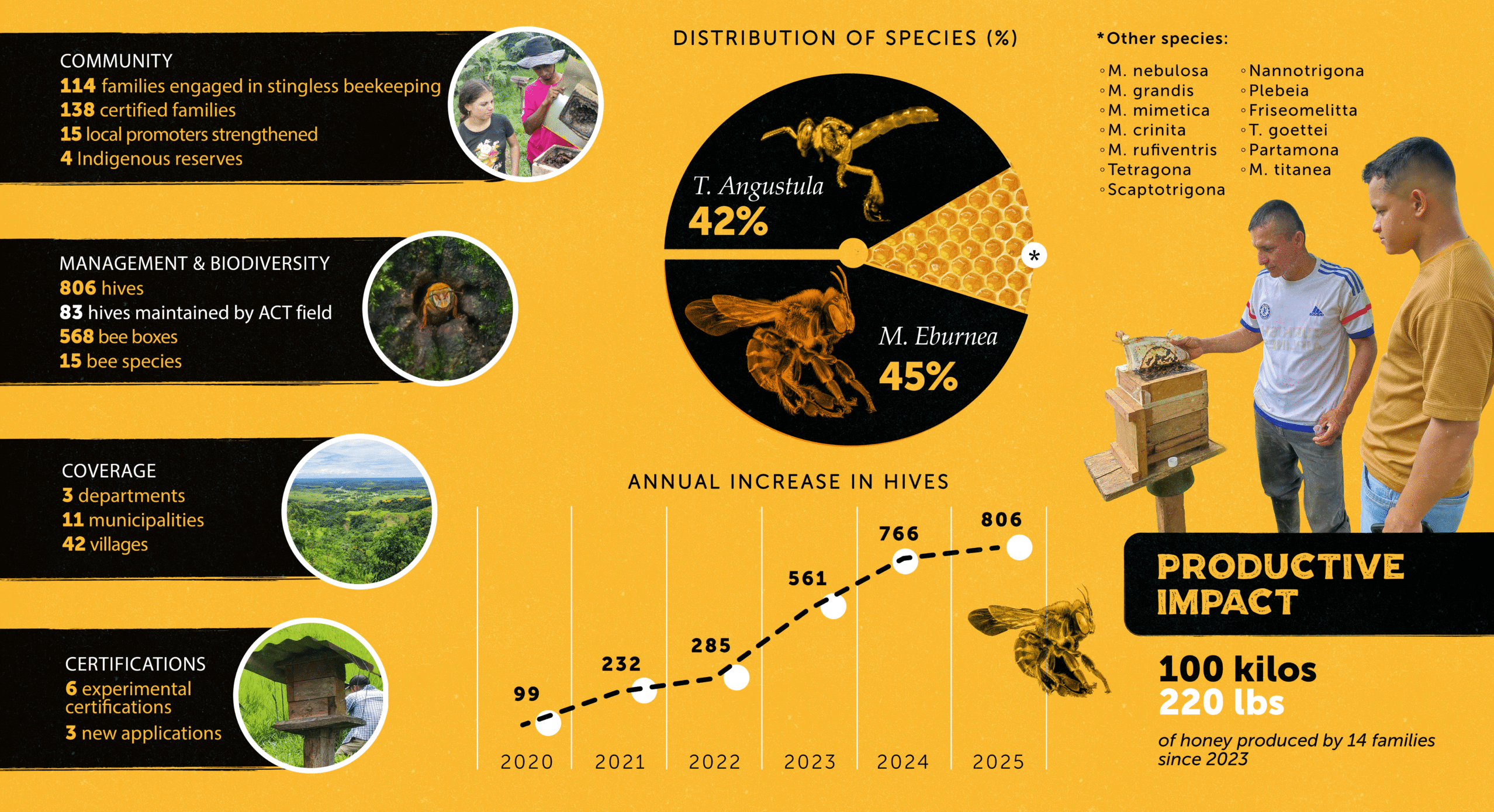
A Village of Female Bees!
A stingless bee nest is like a village, but almost everyone inside is female! The queen is the only one who lays eggs, and all the worker bees that keep the hive clean, gather food, and care for the young are her daughters. Male bees leave the nest early because they don’t help with the work. Depending on the species, a hive can produce 50–200 new female bees every day!

Related Blog Posts
Stingless Beekeeping: A Sweet Solution for Culture and Community
Breeding bees to combat deforestation in Caquetá
The Healing Bees of the Amazon Forest
Testimonial
"My name is Airjian Shodi, a bee technician from Kwamalasamutu, South Suriname. I joined the Stingless Bee Project in 2017 to learn how to produce honey in a more sustainable way, specifically by using hive boxes.
I started with just one box, and now I have nearly 60. I sell honey to local shops and use it as traditional medicine for myself and my family.
In the past, we used to harvest honey from standing or fallen trees, which sometimes meant cutting trees down. Now, we carefully transfer bee hives into boxes, doing our best to avoid felling trees. This method not only helps us protect our forest but also ensures that our bees, and the knowledge surrounding them, continue to thrive for future generations."
Airjian Shodi, Kwamalasamutu, South Suriname


